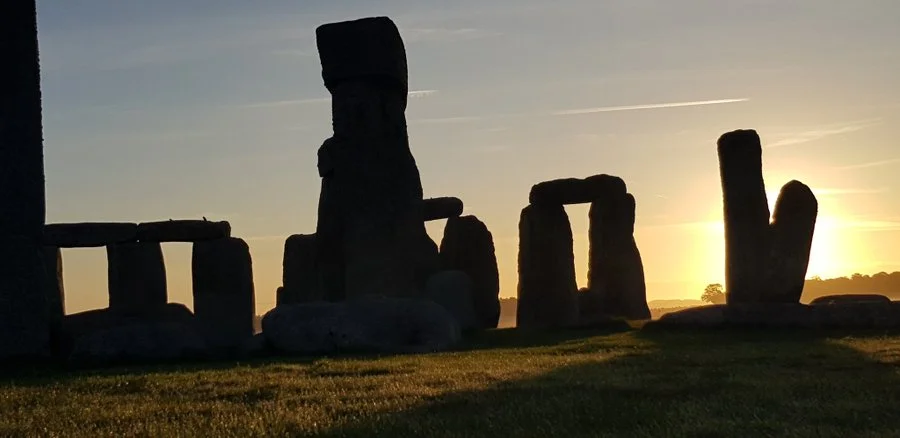- Researchers argues that the design of Stonehenge was one big solar calendar
- The entire site was the physical representation of one month, lasting 30 days
- One theory is Stonehenge served as an ancient calendar, although others exist
Research showed the stones were added about 2500BC and remained in the same formation, indicating they worked as a single unit such as a calendar. Join us on a Stonehenge tour and hear all the latest theories

Professor Timothy Darvill said the Wiltshire stone circle’s layout served as a physical representation of the year.
He said the research indicated “the site was a calendar based on a tropical solar year of 365.25 days”.
Although the origins of the site remain a mystery, in a paper published in the journal Antiquity, Prof Darvill deduced that the stones are displayed to represent a solar year of 365.25 days and were once used to help people keep track of time.
His analysis also includes new finds about the site’s history, along with analysis of other ancient calendar systems.
The prehistorian, who works at Bournemouth University, said that “the clear solstitial alignment of Stonehenge has prompted people to suggest that the site included some kind of calendar since the antiquarian William Stukeley.
“Now, discoveries brought the issue into sharper focus and indicate the site was a calendar based on a tropical solar year of 365.25 days.”
The significance of the layout is highlighted during the Winter and Summer solstices, when the sun is framed by the same stones every time.
The solstitial alignment helps to calibrate the calendar and any errors would be easily detectable as the sun would be in the wrong place during the biannual event.
Professor Darvill said: “The proposed calendar works in a very straightforward way. Each of the 30 stones in the sarsen circle represents a day within a month, itself divided into three weeks each of 10 days.”
The solar calendar was developed in eastern Mediterranean countries after 3000BC and adopted in Egypt as the Civil Calendar around 2700BC. It was widely used around 2600BC, at the start of the Old Kingdom.
This information raises the possibility that the calendar that Stonehenge tracks may be influenced by other cultures. SOURCE
Relevant Stonehenge News Links:
Stonehenge was a solar calendar, according to research – BBC
Stonehenge may have been a giant calendar and now we know how it works – New Scientist
Stonehenge mystery solved as a solar calendar – with links to ancient Egypt – Evening Standard
Stonehenge mystery unravelled as scientists detail key use ‘Very straightforward’ – The Express
Stonehenge may have served as an ancient solar CALENDAR, helping people track the 365 days of the year, study claims – Daily Mail
Visit Stonehenge with the megalithic experts and hear all the latest theories – Stonehenge Guided Tours
Please visit our Stonehenge Tour website and cross Stonehenge off your bucket list.
Stonehenge Guided Tours
WINNER: Best Stonehenge Tour Specialists 2020 / 2021
WINNER: Best ‘Historical Tour’ Operator 2020 / 2021
Operating Stonehenge Tours Since 1990
www.StonehengeTours.com


